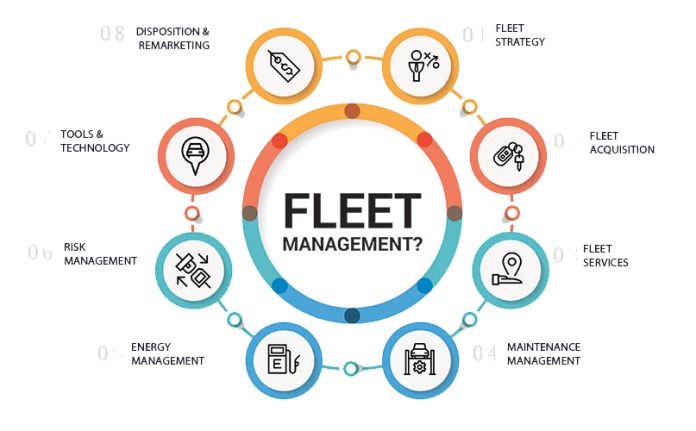Managing a fleet of vehicles comes with several major challenges. For example, you’ve got to stay on top of maintenance duties, and that’s where your biggest challenge lies.
What makes fleet maintenance challenging? Several factors. The biggest challenge is managing your maintenance systems. You also have to keep your fleet optimized both mechanically and in terms of driver productivity. Another challenge is cybersecurity. Cybersecurity for maintenance teams isn’t that difficult to implement, although it does take planning.
These are just a few of the challenges that come with fleet management, and here are several solutions to these, and other challenges.
- Use fleet maintenance management software
The more vehicles you have in your fleet, the harder it is to manage – that is, unless you use fleet maintenance software. By using software, you’re bypassing the challenge of manually tracking information and requirements for your fleet.
For example, the software will tell you when all of your preventive maintenance tasks are due, including oil changes and tune-ups. The software will also track gas mileage and other technical details so that you can maintain better fuel efficiency.
Software can also help protect you against cyberattacks. A good fleet maintenance application will be loaded with security features that ensure only authorized users access your account.
- Don’t put off preventive maintenance
Preventive maintenance is critical for maintaining a healthy vehicle fleet. Each of your vehicles has its own maintenance requirements, but generally speaking, each vehicle will need the following periodically:
- Vehicle inspections (daily, weekly, monthly)
- Oil change
- Air filter change
- Fluid bleeds
- Waxing (for some vehicles)
- Tire rotation
- Headlight and other light changes
- Tune-ups
- Wiper blade replacement
- Tire changes
- And more
Putting off preventive maintenance can have costly consequences, including damage to your vehicles. Improperly maintained vehicles can become a danger on the road, and can potentially cause accidents. Not maintaining your vehicles regularly can also damage internal parts, including the engine. Following through with preventive maintenance is crucial.
- Pursue all warranty reimbursements
One maintenance challenge you may not think about is the cost of maintenance and repairs. The average cost of a car repair is around $385, but there are many repairs that cost much more than that. If you’re lucky, the repairs you have to deal with will be small, but that’s not always the case. Sometimes you’ll need to pay for bigger repairs and you may even need to decide if it’s worth repairing in the first place.
The cost of repairs makes it critical to pursue warranty reimbursements. If you purchased your fleet vehicles new, they will be under the manufacturer’s warranty for a while. For your other vehicles, you might have different parts and repairs under individual warranty from the shop that performed the repair.
Each time one of your vehicles needs a repair, if it qualifies for coverage under a warranty, file a reimbursement claim. It might not seem like much if the repair is just a few hundred dollars, but those reimbursements will add up over time.
For example, if you have ten fleet vehicles, getting reimbursed for one $300 repair per year per vehicle will save you $3,000 per year, which is $30,000 over the course of ten years. That’s significant.
Now imagine that your vehicles might need more than one repair each year. Now you can see why pursuing warranty reimbursements is going to save you money on maintenance.
- Track everything
There are two main reasons to track everything: to improve performance and ensure your business runs smoothly. Consider tracking your vehicles with GPS so they can always be located in real time. This will give you insight into how efficient your drivers are on their routes.
Another thing you’ll want to track is your vehicle’s performance. For instance, have sensors installed to track things you wouldn’t notice otherwise, like changes in tire pressure, fuel consumption, and factors that can help predict a mechanical issue before it becomes a serious problem.
Managing your fleet doesn’t have to be difficult
With the right tools, managing your vehicle fleet can be easy. As long as you’re using software to track your needs and services, you can come up with a system that works perfectly for you.






